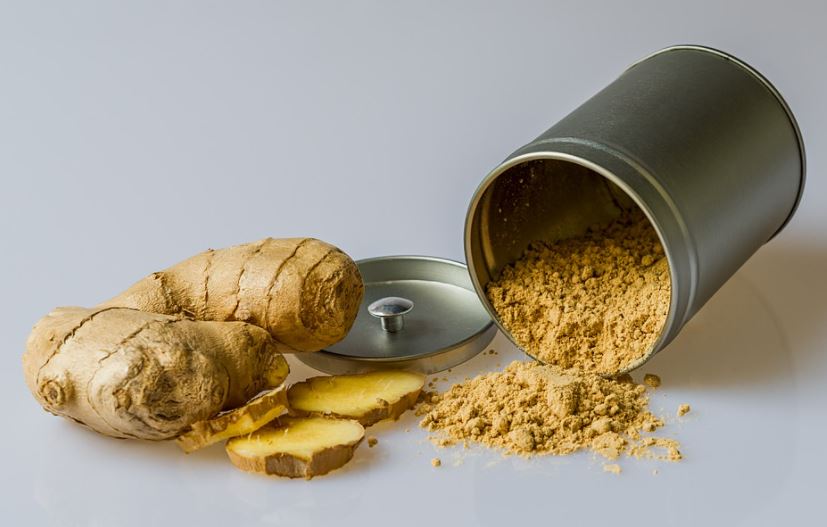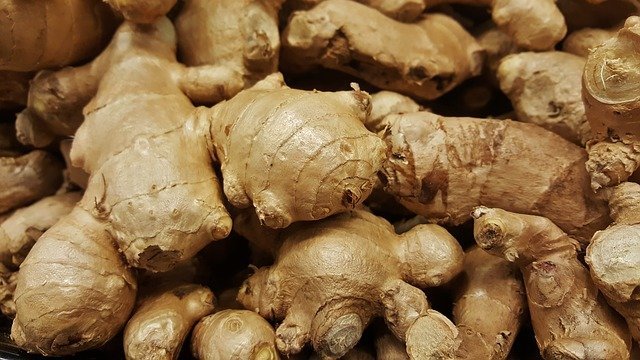Growing ginger can be fun offering a steady supply of fresh ginger in times when you need it most. You can grow ginger by planting store-bought ginger rhizomes.
But when is the right time to Harvest? Young Ginger can be harvested as early as four months after planting though if you want to harvest mature ginger with the best flavor wait for 8 to 10 months.
Steps to Harvest Ginger
Like many edible root plants, the key to great, strong-scented, and unique tasting ginger is letting it sit in the soil till it has reached complete maturation. Plucking it from the soil any sooner could leave you with inadequate tasting ginger.
But how do you know the time is right to harvest Ginger and what are the steps that you should take? Let us look at them below.
Step 1: Wait for the Right Time
Although the rhizomes are already present and just need to expand, mature Ginger would be ready to harvest after about 8 to 10 months of planting. If you are open to using young immature ginger, these can be harvested sooner at about 4 months.
In most American weather zones, it is preferential to let your ginger have the full 10 months to grow and mature. But in some zones, the first ground freeze will occur before the time is up. In that case, you will have to harvest them before freezing starts.
In areas that are warmer, ginger is typically planted in March which is the Spring season. Counting on eight months of growing brings us to November, a month just marking the end of the Fall season and this is the harvest season for most American ginger growers.
If you are looking to harvest young ‘baby ginger’, you can start to harvest a few rhizomes as early as July which happens to be Summer! This should sustain you until you can harvest the rest.
The time between these seasons gives the ginger ample time to absorb the heat and direct all activities to the roots below ground for the rhizomes to grow.
Ginger Pests: How do these Insects Affect Your Ginger? Tips to control
Step 2: Observe the Leaves
With the majority of vegetables and crops, the foliage (leaves or flower stems) acts as a great indicator to help you identify the right time to harvest the rhizomes. The same rule applies to ginger and it is the flower and leaves that give the signs for harvest.
Typically, you should wait for your ginger plant to flower and the blooms to dry up. As soon as the flowers dry up, the ginger leaves will also follow suit and become yellow and dry.
This drying up of leaves is a sign of the maturation of the roots and you will be able to harvest Ginger rhizomes shortly after this.
Step 3: Preparing to Harvest Ginger
Harvesting Ginger could be tricky. Let us help you with how you can easily harvest your ginger.
- Loosen the soil around the plant stalks and the rhizome.
- Dig in a circular pattern around the ginger plant with the help of a trowel or your hands (using gloves). Use a 2 to 4 inches depth as an indicator of how far down to dig.
- After the soil is loose, you can easily locate the ginger rhizomes. These rhizomes will be a distinct pale brown or white color and are easy to spot against the background of dark soil.
Step 4: Harvesting Young Ginger
You have been waiting for four long months and want to either have a look at your produce or just want to taste the young ginger.
Young ginger is formed after four months of planting. They are light cream having almost translucent skin. They tend to be less pungent and juicy. For a complete pungent gingery taste, you need to wait till 8 – 10 months after planting.

To pick some young ginger rhizomes halfway into growing (4 months), push the soil away from the plant. Using your hands or a trowel, try to locate a side rhizome. Use the trowel to cut off and separate this piece of ginger.
Dig out the separated ginger piece and cover up the area with soil. The ginger rhizome will again grow from where it was cut off.
Now you are ready to enjoy the taste of fresh young ginger.
Step 5: Harvesting Mature Ginger
Once the soil is loose enough after preparation (Step 3), the ginger rhizomes should become visible.
Keep digging until the root system is visible and then use your hands to gently pull the rhizome upwards.
Try not to damage the ginger when using tools to dig them out of the ground. Be patient and gentle while harvesting ginger.
Grab the stems and pull firmly to dislodge the ginger rhizome from the ground. By doing this it is possible that a few pieces may break off from the main plant. Use your garden trowel to dig inside the soil and retrieve any broken-off pieces of ginger.
Step 6: Post Harvest Care
Ginger does require some after-harvest care to make sure that it keeps well and does not become vulnerable to diseases. Start by cutting the stems off and washing the ginger rhizomes.
Scrub the ginger with a clean brush while washing to make sure all the dirt is removed from difficult nooks and crannies.
These awkward shapes may make this process difficult to clean. You can let the ginger dry and then again try after a few minutes.
Don’t be too quick to discard ginger stems since they also make for an exciting garnish on top of your finished dishes. Though, this delicacy is viable only for a short time after which it will become unusable.
Step 7: Storing Ginger
Ginger is a very easy-going spice plant, which means there are so many ways to store this valuable spice. Here are a few ways to retain your ginger and enjoy intense ginger-flavored food for longer.

1. Drying
Dehydrating any food item is a sure way to make it last longer. Ginger can be dried and kept whole or processed to make a powder.
Powdered ginger is widely used in baking and tea.
2. Blending
Ginger Paste is a favorite among people who base their meals on ginger flavors. The fresh ginger is put into a food processor to make it a moist paste. This paste can then be refrigerated or frozen and used later as per convenience.
3. Fresh Ginger
A number of ginger fans say fresh ginger is the best form of ginger. Of course, the taste of freshly harvested ginger is unlike any other form of this spice.
You can peel ginger and keep it in your refrigerator but there is usually an expiration date on it due to condensation of water. Eventually, the excess water will start to make the ginger rot.
Fresh ginger can last 3-4 weeks without spoiling, so better use it fast!
4. Frozen
Freezing is a very effective way to keep ginger. You can delay spoilage by freezing the ginger whole after you peel them. You can defrost a few pieces a few minutes before you intend on using them. Frozen ginger can surpass the 2 to 3 months mark if done properly.
A few facts you should know about Growing Ginger
- Ginger is a tropical crop that flourishes under high temperatures and plenty of rainfall. Conditions that are usually present in the tropics.
- Ginger planting occurs in early spring/summer.
- You can plant ginger outside in USDA Zones 7 and above. Living in any other zone will require you to grow ginger in pots and bring them indoors in colder temperatures.
- Ginger must be grown in nutrient-rich soil that is loamy and drains well.
- Continuous watering to keep the soil moist is mandatory, make sure the soil is not wet or flooding. Excess moisture will lead to the rotting of ginger rhizomes.
- Cease watering towards the end of maturation to allow the bulbs to draw moisture from the foliage.
- This rhizome takes around 8 to 10 months to mature. But can be harvested in 4 months if young ginger is your preference.
- Ginger is a perennial plant that grows and gives edible rhizomes for a duration of 2 years (assuming you live in the right weather conditions).
How long does ginger take to grow?
Ginger takes approximately 8 – 10 months to grow if you want the best ginger rhizomes (large and plump). In case you cannot wait that long, you can start benefiting from your ginger plants as early as 4 months after planting them in your garden.
Growth time can vary based on the range of temperatures and climate zones present in your home state in the USA. The growth time is generally longer in states that experience colder climates as opposed to warmer ones.


